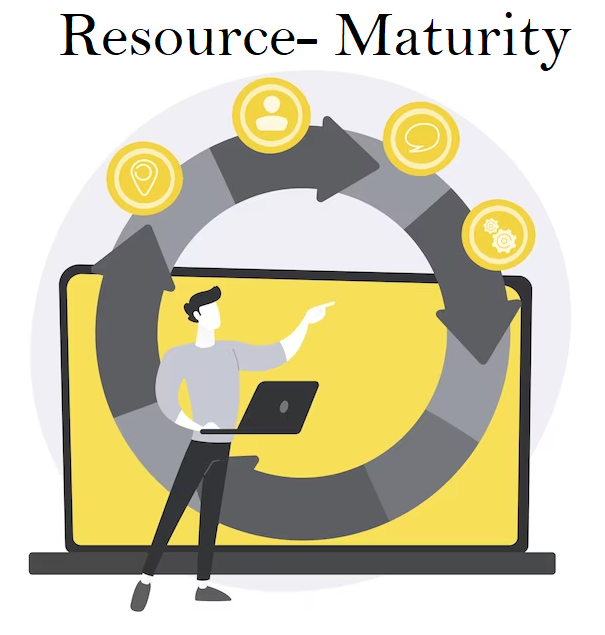Published at business by Sael

How to plan for the Small Business Growth stages
Published at business by Sael
New research from Enterprise Nation found that the figure rises to almost half (48%) amongst young adults aged between 18 and 24 who said they are considering starting a business. With hard work and determination, anyone has the power to turn their aspirations of entrepreneurship into a successful reality.
A business is started with one motivation. Growth invariably results in increased profits. Whether a business is a restaurant, a company that develops software, or a manufacturer of culinary products, growing is crucial.
What, though, is the best way to ensure that growth? That's the question we'll answer in this guide: "How to Plan for Small Business Growth Stages."
Table of Contents
1. Phases of Small Business Growth Stages
1.1. Stage 1: Existence
1.2. Stage 2: Survival
1.3. Stage 3: Success
1.4. Stage 4: Take-off
1.5. Stage 5: Resource maturity
2. Conclusion
1. Phases of Small Business Growth Stages
There are five distinct phases that every company must pass through as it develops from infancy to maturity. These phases include existence, survival, success, take-off, and resource maturity. There are obstacles in every phase of a small business's development.

1.1. Stage 1: Existence
At first, small business owners worry most about finding customers, getting them to sign up, and being able to sell their goods and services. They are trying to figure out if they can grow from a test, beta, or pilot phase if they can get customers and sell enough goods or services to make a profit, and if they have enough cash on hand to cover all of the start-up costs. This is the first business growth stage.

How to plan for this stage?
1. Try to get investors on board
At this point, financial help is very important, so try to find people or groups that might be interested enough in your project to give you money. To find out if the idea is possible, this will require a lot of market and economic research.
2. Create your Business Plan
A SWOT analysis is crucial before entering a new market to identify the business's strengths, weaknesses, opportunities, and threats. Your business's success will depend a lot on how your business starts financially, so try to plan as much as you can down to the last detail in this business growth stages.
3. Getting help and opinions from experts
Experts and business owners in your field, as well as business partners, friends, and co-workers who are knowledgeable in this area, can give you useful advice and opinions about the potential of your business idea. Ask them what they learned most from the seed funding stage of their projects and what their biggest challenges were.
4. Think about the market and what you do in it
Ask yourself if the market is ready for your business and if your idea, product, service, or plan can fill a need. How can your idea help your possible users and clients feel better?
These are the things to be planned in this business growth stages.
1.2. Survival
At this point, a business's basic business plan premise has been proven, and it has a real operating issue. In this business growth stages, the link between income and costs is what's most important.
Owners are assessing three things: (1) can they break even on their basic asset replacement or repair; (2) can they reach cash flow break-even; and (3) can they finance expansion to realize an economic return on labor and assets?

How to plan for this stage?
1. Set up a framework for your business
At the start of a new business, your workers are probably wearing many hats. As is the case with any start-up, everyone pitches in to help out wherever they can, but eventually the company will need to formalize their operations so that they may expand.
2. Maintain a steady rate of innovation
In the early stages of your business, you meet people and devise fresh strategies for marketing your goods and services. In this business growth stages, innovation plays a crucial role. It is essential to address customer feedback work on new innovative ideas and decide the products or service changes in the future.
3. Determine an equilibrium cash flow
In this phase, it is crucial to make changes in your business plan which enables a steady cash flow. This helps you reach your goal - Growth. You can expand your organization by hiring new employees.
4. Confront and gain victory over many obstacles
In this business growth stages, the biggest challenge is to build a customer base and a market presence. Also, maintaining and taking care of cash reserves and revenue targets.
1.3. Success
At this business growth stages, success is achieved. The company has established a strong foundation in the industry and is thriving. With its size and reputation, the business maintains a financially stable position. As the brand evolves, skilled leaders are brought in to manage its growth and the owner can step back and let the business flourish.

How to plan for this stage?
1. Self-focus
The main point should be to build a team by hiring good people to run different parts of the business. As the boss of your business, you should spend time on things that help it grow and think ahead to problems that could slow this growth. Set clear goals and build order and cohesion through a well-established recruitment process.
2. Boost your connections with customers
You need your star employees to take the initiative in building and maintaining positive client connections and streamlining internal operations. Senior executives with years of experience and employees at lesser levels should collaborate to turn customers into brand ambassadors, which will propel your business to new heights in this business growth stages.
3. Investments are required
Investment is required during the growth period to get your firm to the maturity level. You will almost certainly need outside investment funds from either investors or debt. In the first case, you will get more advisors, but you will lose wealth. With the second, you keep some of the property's value and sign personal promises with banks to get money.
1.4. Take-Off
In this business growth stages, the entrepreneurs have decided to expand their business. It involves both day-to-day activities and long-term goals. The owners decide on the business set-up and the work assigned to the managers.
The owner has to work hard to keep the prices and the cash flow under control while maintaining a high debt-to-equity ratio. The things that cause failure at this stage are:
- Trying to grow too quickly
- Running out of money
- Not designating the work effectively to the team.
How to plan for this stage?
1. Business expansion
Before taking this step, consider whether the company's expansion can be sustained. What are the prospects for further market expansion, if any? Can you afford a possible failure? As a leader, are you capable of handling the difficulties that a new expansion might bring?
2. Identifying an appropriate Exit strategy
In this business growth stages, you will take a lot of analysis of both the inside and outside of the company. You and the other managers in charge of the company need to get the appropriate details to the right individuals at the right time.
You can get out of the business by selling all or part of it. How your organization is structured and the choices you make going ahead will determine how the sale process plays out.
1.5. Resource Maturity
As mentioned in this business growth stages, the organization has necessary people and money to deal with full strategic and operational planning. There is decentralised management structure in place and senior staff to handle things and essential tools for the growth of the company. The owner and the business have grown far apart, both financially and in terms of how they work.
The company's unwavering entrepreneurial spirit and unwavering commitment to innovation have positioned it for continued success. As long as it maintains its agility and adaptability to change, the company is poised to thrive.
As a company grows, it becomes more susceptible to ossification, which refers to the stagnation of new ideas and a corporate culture that discourages taking risks.
To avoid this, it's important to maintain a flexible culture that can adapt to changes in the environment and market. Additionally, having a structure and benefits that encourage adaptation can help prevent ossification.

How to plan for this stage?
1. Market Segmentation
Identify and target certain consumer categories to focus your marketing efforts and product offerings rather than trying to appeal to everyone. The more important it is to comprehend the wants and needs of your clients.
2. Product Diversification and Cost Optimization
You should think about diversifying your offerings of goods and services if you want to keep growing in the same business in this business growth stages. This could mean adding extra products, different versions of the same product, or new features that meet the needs of current customers.
By streamlining your processes and cutting back on unnecessary expenditures, you can preserve profitability. Look for ways to simplify processes, renegotiate relationships with suppliers, and improve the efficiency of the supply chain.
3. Brand leveraging and retaining customers
Maintain your brand's development and reinforcement. Branding, quality, customer service, and reputation can help you stand out from your rivals. The trust of customers is becoming more and more important.
Prioritize keeping your current clientele. To improve customer happiness, use rewards programs, give great customer service, and ask for feedback. Happy customers can spread the word and bring in new business by referring others.
4. Creativity
Keep generating ideas, regardless of whether it means making small changes to your goods or services. Keeping up with the competition and keeping clients interested requires constant innovation.
5. Market Research and Promotion
Remain aware of consumer preferences and market trends. It is essential to stay flexible and adapt to evolving market conditions and customer behaviours throughout business growth stages.
Make focused marketing campaign and promotion investments that appeal to your existing clientele. To maintain contact with your audience, think about utilizing email marketing, social media, and content marketing.
2. Conclusion
In conclusion, careful planning for small business growth stages is crucial to guide the entrepreneurial journey. Each stage has its challenges and chances, and if you have a well-thought-out plan, you can get through them all successfully. Remember that growth isn't just about getting bigger; it's also about adapting, coming up with new ideas, and building relationships with customers that last.
Embrace these business growth stages with enthusiasm, flexibility, and a strong commitment to your goal. Your business's success story is waiting for you, and with careful planning, hard work, and a little creativity, you can turn a small business into a thriving one. So, aim high, keep your mind on the goal, and get started on your way to small business success!





